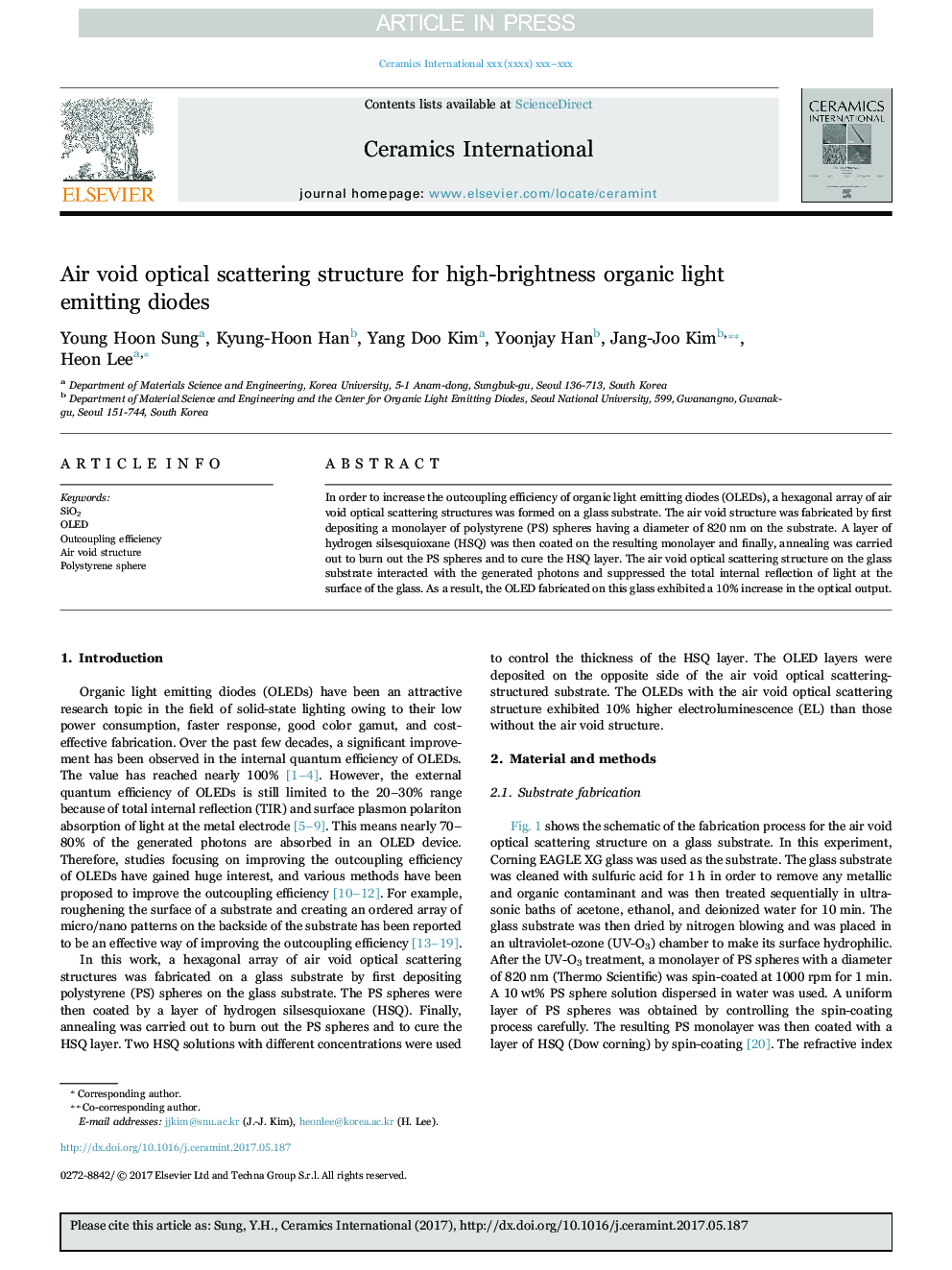| Article ID | Journal | Published Year | Pages | File Type |
|---|---|---|---|---|
| 5438867 | Ceramics International | 2017 | 5 Pages |
Abstract
In order to increase the outcoupling efficiency of organic light emitting diodes (OLEDs), a hexagonal array of air void optical scattering structures was formed on a glass substrate. The air void structure was fabricated by first depositing a monolayer of polystyrene (PS) spheres having a diameter of 820Â nm on the substrate. A layer of hydrogen silsesquioxane (HSQ) was then coated on the resulting monolayer and finally, annealing was carried out to burn out the PS spheres and to cure the HSQ layer. The air void optical scattering structure on the glass substrate interacted with the generated photons and suppressed the total internal reflection of light at the surface of the glass. As a result, the OLED fabricated on this glass exhibited a 10% increase in the optical output.
Related Topics
Physical Sciences and Engineering
Materials Science
Ceramics and Composites
Authors
Young Hoon Sung, Kyung-Hoon Han, Yang Doo Kim, Yoonjay Han, Jang-Joo Kim, Heon Lee,
